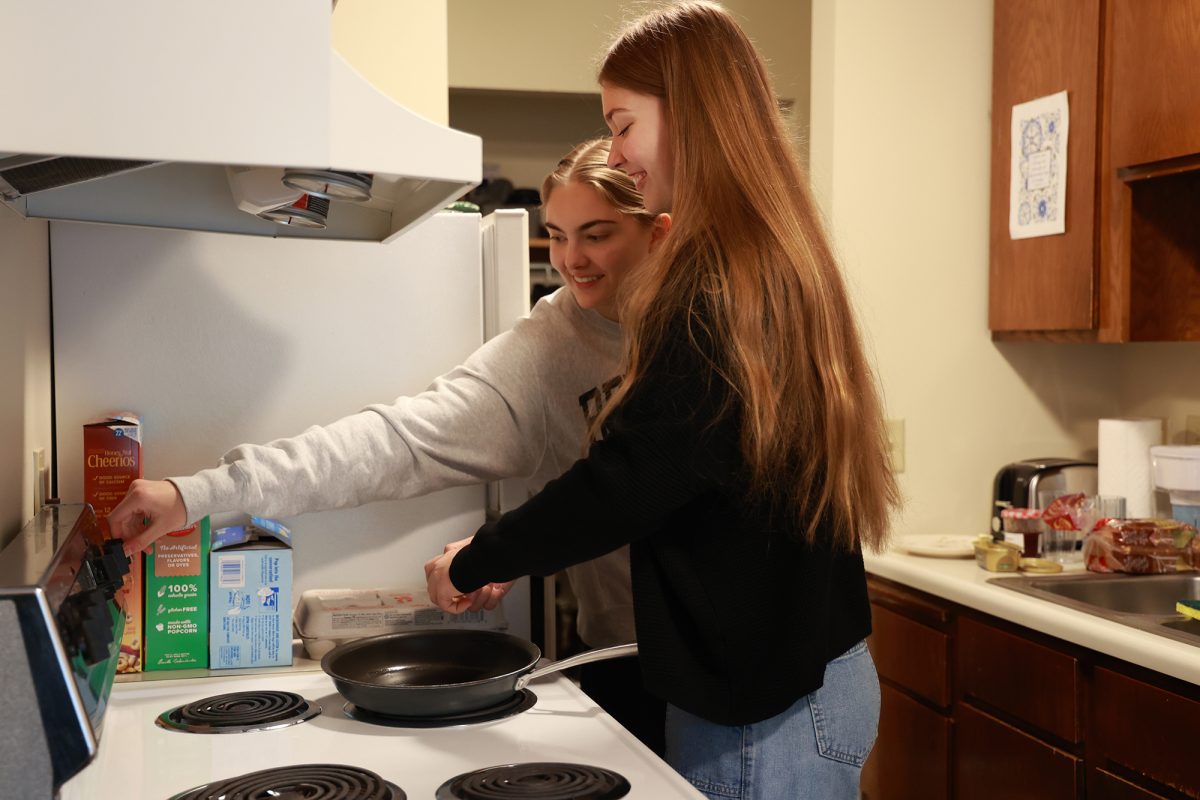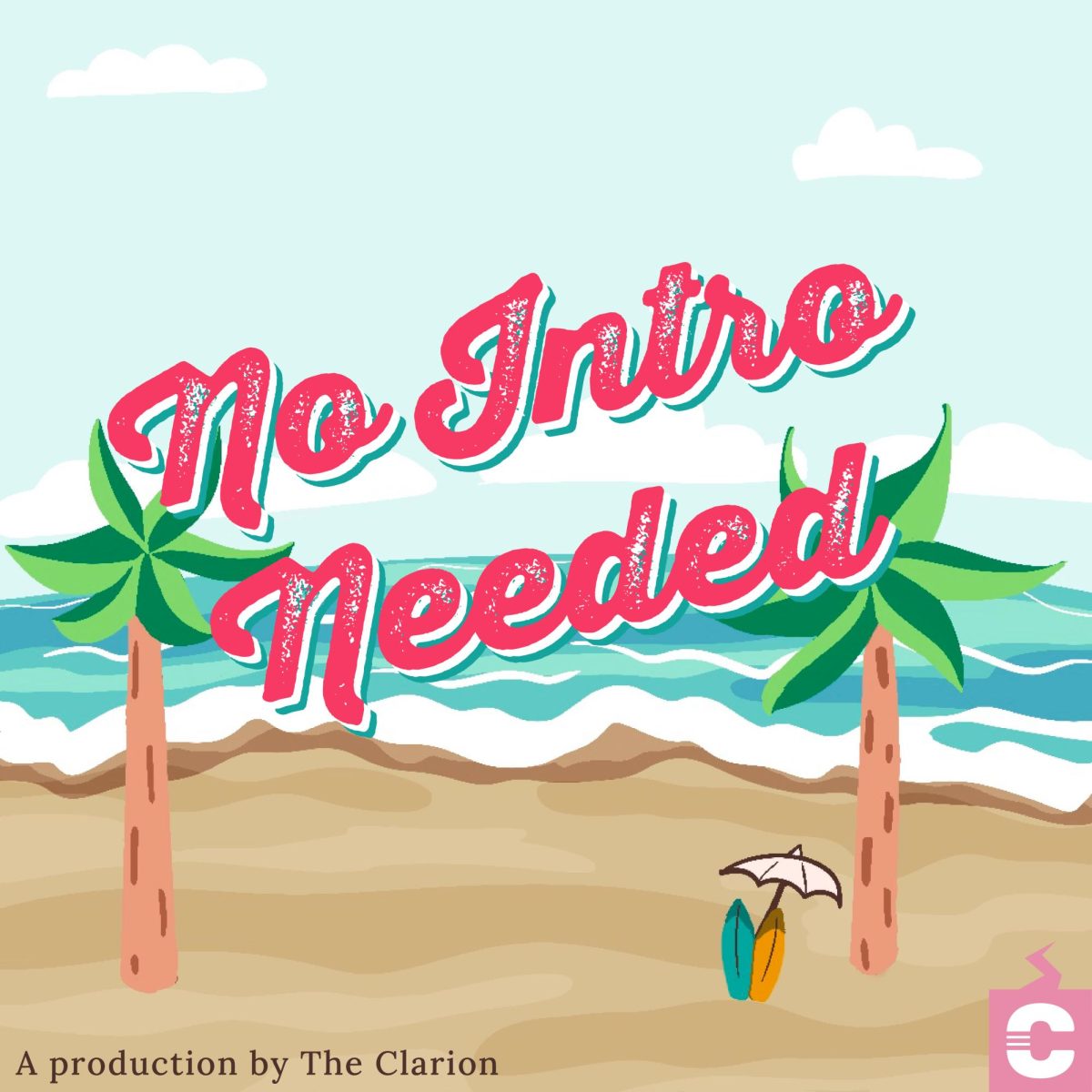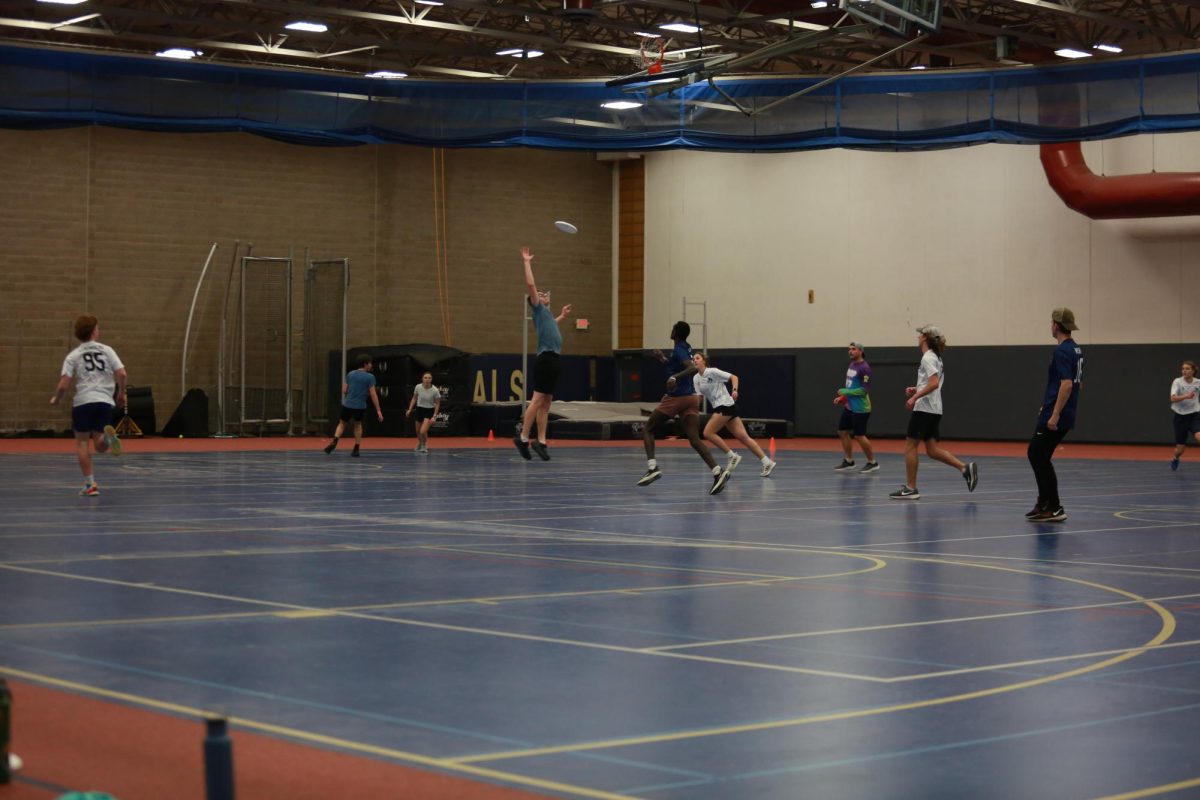Community discussion of race yields more questions than answers
Jenny Hudalla| Editor-In-Chief
Published in Issue 13 of The Clarion year 2014-2015
“We need more chairs.”
That’s what a Facilities Management worker said above the steady hum of conversation as hundreds of students piled into The Underground for Bethel’s #BlackLivesMatter event Tuesday night.
With more than 350 people in attendance, it was perhaps the most collaborative and intentional community discussion of race that Bethel has ever seen. Students, faculty and staff from seven departments and offices – including the Office of the President – contributed to the production of the event.
But what inspired such a far-reaching mobilization? According to UCB Director Zakiya Robinson, who spearheaded the event, the purpose of the #BlackLivesMatter discussion was fourfold: to contextualize historical incidents of police brutality; to discuss Christian engagement with social justice; to address the place of white students in the conversation; and to identify how Bethel can better pursue its core value of reconciliation.
“It was probably the biggest project I’ll be a part of at Bethel,” Robinson said. “I don’t think anything’s going to have that same kind of magnitude. People left feeling inspired.”
Throughout the night, those in the audience were invited to text in anonymous questions for the event’s four-person panel – which comprised two black students, one white student and one white professor – with the hopes of fostering a candid discussion about the racial turmoil occurring at both a national and local level.
According to reconciliation studies professor Christena Cleveland, who moderated the discussion, one of the most common questions texted in was: “Why are we talking about the importance of black lives? Shouldn’t #AllLivesMatter?”
Senior panelist Justin Giuliano did his best to answer that question during Tuesday night’s discussion, citing examples that ranged from Band-Aids to Barbies to book protagonists to illustrate the normalization of whiteness in mainstream society.
“Society is set up to affirm whiteness,” Giuliano said. “Look at our beauty standards. Look at Miss America . . . My black culture isn’t affirmed until it’s used or appropriated by white culture.”
According to panelist and theology professor Christian Collins Winn, questions like that indicated that a campus-wide discussion of race was long overdue.

“With all of the events going on nationally . . . it was high time that we as a community came together to talk about the various problems, injustices and challenges that we face in our country and on the Bethel campus,” he said.
The event itself was collectively deemed a success by those who organized it, running 10 minutes over its hour-and-a-half time slot and drawing more than 60 students to four ensuing processing sessions. It was the online backlash, Robinson said, that was troubling.

Though students were given the opportunity to engage in the panel’s discussion Tuesday night, some chose to express themselves on Yik Yak, an anonymous social media app. While several Yaks condemned the event as a devaluation of white lives or a form of reverse racism, one post in particular proved that racial tension is still a reality in the Bethel community.
“Someone dress up like a respectable guy in a white hood and robe,” the Yak read. “Show up to underground with cone under white hood. #CrossCulturalExperience.”
When Robinson saw it, she burst into tears.
“It’s a scary thing to know that people still think like that,” she said. “It makes me feel like my work is in vain.”
“You have to be a pretty broken person to make fun of an event like that,” Cleveland added. “It says a lot about what is and isn’t okay in this community.”
According to Collins Winn, it is especially important for students and faculty to identify racism as a theological issue, because our image of God informs the way we understand and acknowledge others.
“Racial division in the church and on our campus – among many other things – should be a clue that we have a rather radically distorted understanding of who God is and what it means to be God’s creature,” Collins Winn said.
One of the ongoing problems, Robinson said, is that white students don’t have a safe platform from which they can ask questions about race, culture and identity. Questions like “Am I racist?” “What is white culture?” and “How do I make friends of color?” can be overwhelming and even intimidating.
“Those are the questions we need to answer for white students,” Robinson said. “If we can’t engage that part of the community, the momentum will stop because the resources aren’t there.”

While Robinson said the #BlackLivesMatter event was a good way to initiate campus conversation about race, it wasn’t enough to fuel lasting change. That, she said, will happen when white students adopt a genuine interest in racial reconciliation and actively work to dismantle systemic oppression.
“Bethel as a community is still on the way,” Collins Winn said. “There are still many more miles to go, and we are not there by a long shot. But I do think the event was one more step in the right direction, one more attempt to untie the knot of one of America’s original sins.”
But until that knot is untied, said sophomore panelist Kiersti Phenow, God’s vision of reconciliation will remain unrealized on campus.
“I hate to break it to you, but the Kingdom does not look like Bethel University,” Phenow said to the captivated crowd on Tuesday night. “And I’m glad it doesn’t.”![]()




















Aristotle Bean • Apr 18, 2016 at 1:56 am
Until the Left began a crusade of falsely accusing innocent police officers, and then pouncing on the rare true brutality incidents, racism was correctly perceived to have so declined as to be no longer an impediment to black success.
America has changed. And dramatically so. Even the possibility that this could be good news enrages #BlackLivesMatter and other black activists like Al Sharpton and Jesse Jackson committed to keeping blacks in victim-mode, dependent on the State for hand-outs, and a perpetual state of racial self-loathing.
#BlackLivesMatter — the black version of today’s KKK, except worse (the KKK is famously non-violent today but BLM engages in frequent thug tactics, endangers the safety of others and continuously engage in actions that violate the civil rights of others, including other Black people.
But here are the facts about racism:
In 1960, 60% of Americans said they would never vote for a black president. Almost 50 years later, in 2008, the black man who said racism is in America’s DNA, was elected President. And four years later, re-elected.
That’s only the most obvious example of racial progress. There are many others.
Take inter-racial marriage. As William H. Fry of the Brookings Institution wrote, “Sociologists have traditionally viewed multiracial marriage as a benchmark for the ultimate stage of assimilation of a particular group into a society.” Black-white marriages were still illegal in 16 states until 1967. And a 1958 Gallup poll found that only 4% of Americans approved of black-white marriage. Today,in 2016, that number is 87%. In 1960, of all marriages by blacks, only 1.7% were black-white. Today,it’s 12% and rising.
Now what about racial profiling and abuse of blacks by police? Doesn’t that prove that racism remains a major problem? In the summer of 2014, Ferguson, Missouri became Ground Zero for this accusation when a white policeman shot and killed an unarmed black teenager. While a Department of Justice investigation of the incident cleared the officer of any wrongdoing, it did accuse the city’s police department of racial bias. But what was the Justice Dept’s report’s most headline-grabbing stat? The gap between the percentage of blacks living in Ferguson (67%) and the percentage of those stopped by police for traffic violations who are black (85%). An 18-point discrepancy. Racism right? Not so fast. Blacks comprise 25% of New York City but account for 55% of those stopped for traffic violations. A 30-point discrepancy, far bigger than that of Ferguson. Why isn’t the NYPD, a department in which the majority of it is minorities institutionally racist than the Ferguson PD? The answer is: You cannot have an honest discussion about police conduct without an honest discussion of black crime.
Though blacks are 13% of the population, they commit 50% of the nation’s homicides. And almost always the other victim is a black person. Just as most white homicides are against other whites. In 2012, according to the Center for Disease Control, police killed 123 blacks while, by the way, killing over twice as many whites. But that same year, blacks killed over 6,000 people, again mostly other blacks.
What about traffic stops? Unlike when responding to dispatch calls. police officer exercise more discretion when it comes to traffic stops. Therefore “racist cops” can have a field day when it comes to traffic stops, right/ Actually, no. The National Institute of Justice is the research agency of the Department of Justice. In 2013, the NIJ published a study called “Race, Trust and Police Legitimacy”. Three out of four black drivers admitted that they were stopped by police for a “legitimate reason”. Blacks, compared with whites, were on average more likely to commit speeding and other traffic offenses. The NIJ wrote, “Seatbelt usage is chronically lower among black drivers. If a law enforcement agency aggressively enforces seatbelt violations, police will stop more black drivers.” The NIJ’s conclusion? These numerical disparities result from “differences in offending.” In other words, not because of racism. Similarly, the National Highway Traffic Safety Administration also found that blacks violate traffic laws at higher rates than whites. In EVERY offense. Whether it’s driving without a license, not wearing a seatbelt, not using a child safety seat, or speeding.
Is there still racism in America? Of course there is. But racism is not in America’s DNA.
Recent history and a lot of research and data prove it. As liberal Harvard sociologist Orlando Patterson said, “America is the least racist white majority society in the world, has a better record of legal protections of minorities than any other society — white or black, offers more opportunities to a greater number of black persons than any other society, including all of those of Africa.” Patterson, by the way, is black.